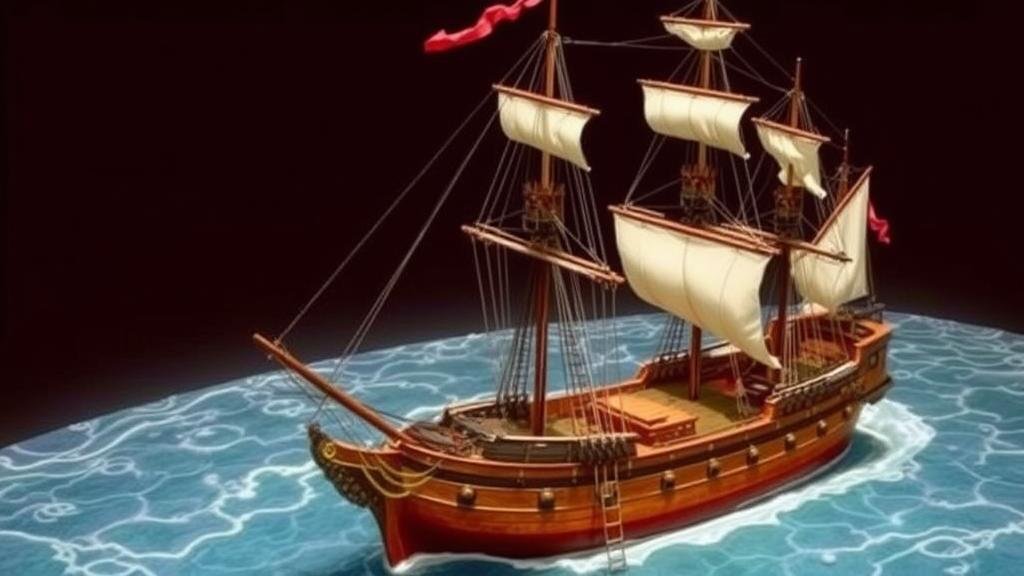The Recovery of the Spanish Galleon San José: Sonar and Legal Battles Over a Treasure Worth Billions Off Colombia’s Coast
The Recovery of the Spanish Galleon San José: Sonar and Legal Battles Over a Treasure Worth Billions Off Colombia’s Coast
The wreck of the Spanish galleon San José, which sank in 1708 off the coast of Colombia, is often regarded as one of the most significant maritime archaeological finds in history. This ship was laden with an estimated $17 billion worth of treasure, including gold, silver, and emeralds. The search for the San José has involved cutting-edge sonar technology and intense legal disputes, revolving around issues of ownership and cultural heritage.
1. Historical Context of the San José
The San José was part of the Spanish treasure fleet, transporting riches from the Americas to Spain. On June 8, 1708, during a voyage laden with an enormous cache of gold and silver, the galleon was struck by British naval forces near Cartagena. The ship sank almost instantly, taking with it an estimated 200 crew members and its treasure. Over the centuries, this wreck became a site of intrigue and speculation, leading to multiple attempts at salvage and recovery.
2. The Role of Sonar Technology in Locating the Wreck
In 2015, the Colombian government, in partnership with the ocean exploration company Sea Search Armada (SSA), announced that they had identified the wreck site of the San José using advanced sonar technology. This technology, such as side-scan sonar and sub-bottom profiling, allows researchers to visualize submerged structures on the ocean floor without excavation.
- Side-scan sonar: A technique that uses sonar waves to create images of the seafloor, allowing for the identification of anomalies that could indicate shipwrecks.
- Sub-bottom profiling: This method enables archaeologists to view layers beneath the seabed, helping to locate artifacts and debris fields.
The deployment of these technologies has been crucial in pinpointing the exact location of the San José, which lies about 2,000 feet underwater. A sonar survey revealed the ships distinctive outline, along with remnants of its cargo, providing vital information for future recovery efforts.
3. Legal Battles Over Ownership
The discovery of the San Josés wreck ignited a complex legal battle over its treasure and artifacts. The primary contention is between the Colombian government, which claims the treasure as a part of its national heritage, and various salvage companies and entities that assert rights based on earlier salvage contracts or investments made into the recovery efforts.
- Colombian Government’s Stance: The Colombian government maintains that the wreck falls under the category of a cultural heritage site, asserting that the treasure belongs to Colombia because it was lost in its territorial waters.
- Opposing Claims: Non-governmental entities such as Sea Search Armada have argued for a share of the treasure, pointing to past agreements that they claim provide them rights over the recovery operations.
In 2018, Colombias government reaffirmed its claim by implementing laws designed to protect underwater cultural heritage. e laws not only facilitate the preservation of the wreck but also impact how future recoveries are conducted.
4. Ethical Implications and Cultural Heritage
The recovery of the San José raises critical ethical questions concerning cultural heritage and the rights of nations to claim ownership of artifacts found in their waters. The debate often pits the idea of preserving historical artifacts in their original context against the benefits and revenues that treasure recovery might generate.
- Cultural Preservation: Preservation advocates argue that artifacts should remain in situ to maintain their historical context and significance.
- Revenue and Research: Supporters of salvage argue that recovery can fund cultural projects and further historical research about the galleon and its rich past.
This ongoing ethical discussion highlights the need for international cooperation and frameworks that balance the interests of nations, salvors, and the global community.
5. Looking Forward: Future of Recovery Efforts
The future of the San José recovery remains uncertain. Continued legal disputes and ethical considerations will shape how recovery operations are conducted. But, advancements in technology hold promise for more efficient and respectful approaches to underwater archaeology.
- Innovations in Underwater Robotics: As robotics technology advances, it may become possible to recover artifacts without disturbing their context.
- Collaborative International Governance: The establishment of international agreements akin to the UNESCO Convention on the Means of Prohibiting and Preventing the Illicit Import, Export, and Transfer of Ownership of Cultural Property could provide a comprehensive framework for future recoveries.
Ultimately, the recovery of the San José represents not only the allure of treasure but also a profound opportunity to reflect upon the past and our responsibility to preserve it for future generations.
6. Takeaways
The saga of the San José serves as a reminder of the complexities surrounding maritime treasure recovery, blending history with modern technology and cultural ethics. The path forward will require sensitivity to the historical significance of the wreck and the potential it holds for scholarship and preservation:
- Understand the implications of underwater archaeological laws and cultural heritage rights.
- Be informed about technological advancements that enhance recovery and preservation.
- Engage in discussions about the ethical responsibilities associated with treasure recovery.
As the story of the San José unfolds, stakeholders must navigate the turbulent waters of greed, preservation, and historical inquiry to reveal the lessons that the past has to offer.



